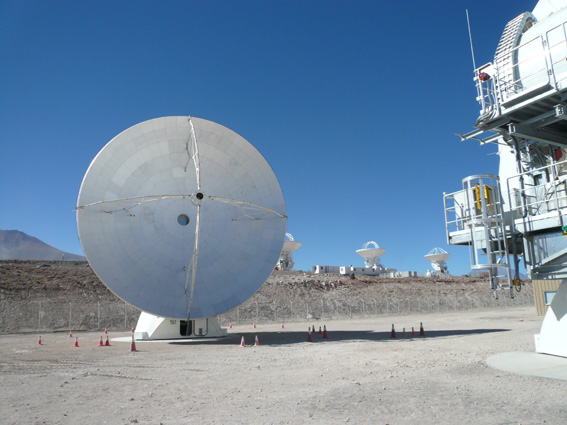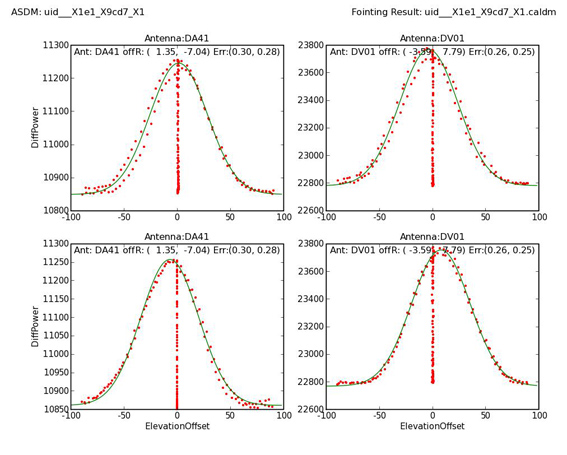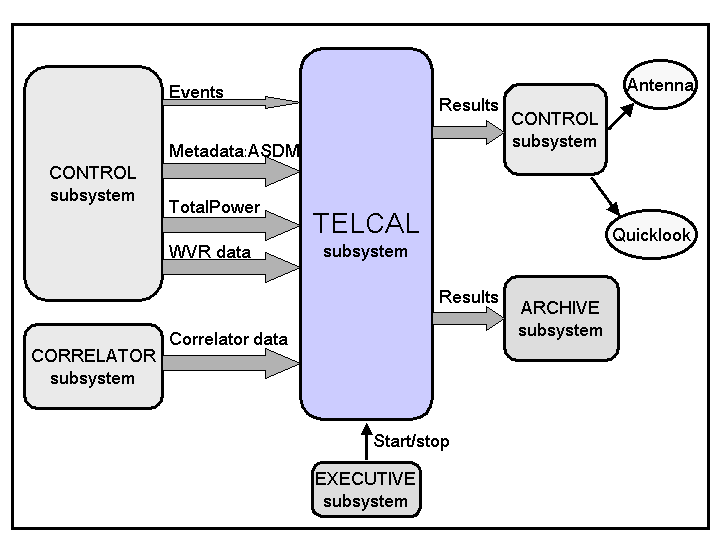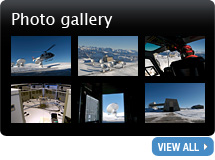The TelCal Software

The ALMA software is a part of the ALMA project and has been divided into several subsystems, attributed to different development teams around the world. The Telescope Calibration software (called TelCal) is one of these subsystems. Since 2002, the TelCal software has been designed and is continuously developped at IRAM, using the institute's expertise in millimeter interferometry.
The TELCAL software is responsible for the antennas' calibration. It includes all the calibration operations that are performed in order to ensure the ALMA array is and remains in proper shape to successfully observe the scheduled projects. Most of these calibrations are executed in real-time so that the results are made available immediately. Calibrations are divided into three categories:
- Adjustment of the antennas: pointing, focus, delay lines, holography, pointing model and antenna positions
- Atmospheric calibration: temperature scale and phase length correction based on water vapor receiver measurements
- Quality of observations: phase and amplitude monitored on astronomical calibration sources.
 |
| The image above shows the results of a pointing scan done on Jupiter, in SingleDish mode and with two antennas (DA41 and DV01). |
The ALMA software development cycle contains two annual major releases, which are prepared, each year, by a CDR (Critical Design Review) meeting. The software robustness is stressed by daily unitary tests and by some end-to-end tests using simulators. The final validation of functional requirements is done by testing the software on sites where prototype antennas are deployed. The ATF (ALMA Test Facility) site at Socorro (in New-Mexico state) has been used until the end of 2008. Now tests are performed at OSF (Operations Support Facility) on the ALMA site (Chile).
The ALMA project is based on state-of-the-art technology in several different fields. In the software domain, modern and powerful tools are used. Therefore, TELCAL communicates with other subsystems through a CORBA based architecture. It deals with a huge amount of information (up to 60 MB/s) that comes from the CORRELATOR subsystem or from the CONTROL subsystem (XML and binaries). The software is developed using several languages, mainly C++ and Java. It also provides off-line Python API interfaces and a binding with the CASA (Common Astronomy Software Applications) reduction software is available. Finally, the TELCAL software contains nearly 100000 lines of code.
 |
|
The TelCal software architecture: the diagram shows the interactions between the TELCAL subsystem and 4 other ALMA subsystems (CORRELATOR, CONTROL, EXECUTIVE and ARCHIVE). The data, which are processed by TELCAL, come from the CORRELATOR or CONTROL subsystem. The results produced by TELCAL are sent to the CONTROL system. All the results are displayed by QUICKLOOK applications and stored in the ARCHIVE. The pointing and focus results are immediately applied on the antennas. |
Another important task done at IRAM, in collaboration with the Observatoire de Paris, is the accurate definition of the scientific data content produced by ALMA. The resulting data format is called ASDM (Alma Scientific Data Model).

